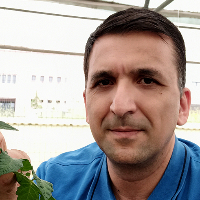Preprint
Article
Automated Remote Insect surveillance at a Global Scale and the Internet of Things
Altmetrics
Downloads
1436
Views
958
Comments
0
A peer-reviewed article of this preprint also exists.
This version is not peer-reviewed
Submitted:
26 May 2017
Posted:
29 May 2017
You are already at the latest version
Alerts
Abstract
Τhe concept of remote insect surveillance at large spatial scales for a number of serious insect pests of agricultural and medical importance is introduced in a series of our papers. We augment typical, low-cost plastic traps for many insect pests with the necessary optoelectronic sensors to guard the entrance of the trap in order to detect, time-stamp, GPS tag, and –in relevant cases- identify the species of the incoming insect from their wingbeat. For every important crop pest there are monitoring protocols to be followed in order to decide when to initiate a treatment procedure before a serious infestation occurs. Monitoring protocols are mainly based on specifically designed insect traps. Traditional insect monitoring suffers in that the scope of such monitoring: is curtailed by its cost, requires intensive labor, is time consuming, an expert is often needed for sufficient accuracy and can sometimes raise safety issues for humans. These disadvantages reduce the extent to which manual insect monitoring is applied and therefore its accuracy, which finally results in significant crop loss due to damage caused by pests. With the term ‘surveillance’ we intend to push the monitoring idea to unprecedented levels of information extraction regarding the presence, time-stamping detection events, species identification and population density of targeted insect pests. Insect counts as well as environmental parameters that correlate with insect’s population development are wirelessly transmitted to the central monitoring agency in real time, are visualized and streamed to statistical methods to assist enforcement of security control to insect pests. In this work we emphasize on how the traps can be self-organized in networks that collectively report data at local, regional, country, continental, and global scales using the emerging technology of the Internet of Things (IoT). This research is necessarily interdisciplinary and falls at the intersection of entomology, optoelectronic engineering, data-science and crop science and encompasses the design and implementation of low-cost, low-power technology to help reduce the extent of quantitative and qualitative crop losses by many the most significant agricultural pests. We argue that smart traps communicating through IoT to report in real-time the level of the pest population from the field straight to a human controlled agency can, in the very near future, have a profound impact on the decision making process in crop protection and will be disruptive of existing manual practices. In the present study, three cases are investigated : monitoring Rhynchophorus ferrugineus (Olivier) (Coleoptera: Curculionidae) using a) Picusan and b) Lindgren trap, and c) monitoring various stored grain beetle pests using the pitfall trap.
Keywords:
Subject: Engineering - Electrical and Electronic Engineering
Copyright: This open access article is published under a Creative Commons CC BY 4.0 license, which permit the free download, distribution, and reuse, provided that the author and preprint are cited in any reuse.
MDPI Initiatives
Important Links
© 2024 MDPI (Basel, Switzerland) unless otherwise stated






